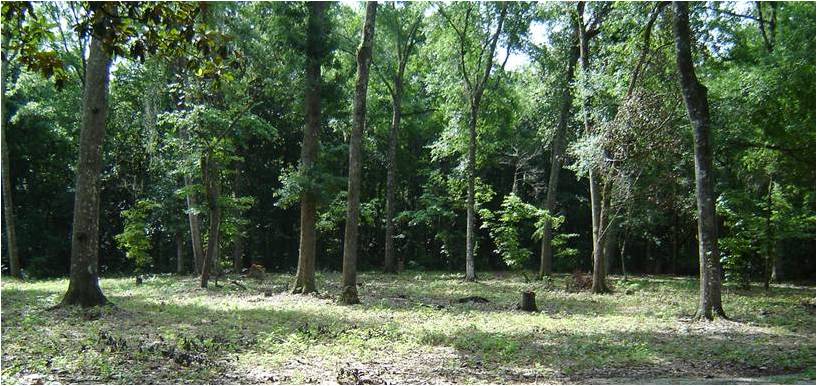By Dr. Henry Grant, Gadsden County Extension Director.
Recently, I received a telephone call from a client regarding establishing a permanent pasture of Argentine Bahia for livestock grazing. In this situation, the client did not want to remove many trees from the site, because he wanted the livestock to have plenty of shade. He only wanted to cut trees he deemed necessary while retaining as much shade as feasible. Is it possible to have the best of both worlds- that is- shade and improved pasture?
Argentine Bahia is slightly shade tolerant but grows best under full sun conditions. Shade tolerance refers to how well a plant can grow under shady or low-light conditions. If trees are shading the pasture area, the Argentine Bahia will not grow strong enough to support the added pressure of livestock grazing.
Another option would be to select a pasture grass that is more shade tolerant, unfortunately the choices for shade tolerant pasture grasses are limited. Tall Fescue has fair shade tolerance, followed by Pensacola Bahia, Argentine Bahia, and Bermuda. Bermuda is the least shade tolerant, and both Pensacola and Argentine Bahia are a small improvement over Bermuda. Although Tall Fescue, a cool season perennial, is shade tolerant, it is not recommended as a pasture forage in Florida. Tall Fescue can be problematic as a pasture grass. There is a natural fungus that grows on fescue, called Endophytes, which helps fescue compete with other grasses and weeds, but this same fungus can cause suppressed appetite and poor growth in the livestock that eat this grass. There are endophyte-free fescue varieties available to grow, but according to Dr. Ann Blount et. al., (2012 Cool-Season Forage Variety Recommendations for Florida): “In general, fescue should not be planted in Florida. It does not persist as a perennial, and small grains and ryegrass are more productive as cool-season annuals.”
Since the client wanted to grow Argentine Bahia for its noted strengths of drought tolerance, grazing potential, and disease resistance, my recommendation was to remove trees from the center of the pasture leaving the peripheral trees for shade. This should provide as many hours of sunlight as possible for the Argentine Bahia to grow.
There is an agroforestry practice called silvopasture that successfully combines trees, forage, and livestock, but while the system does have advantages, it requires intensive management. Silvopasture can be established either by planting trees (generally pine trees) in an improved pasture, or by thinning trees and planting improved forage. Special tree arrangements in silvopastures allow for tree and forage growth, as well as for grazing livestock. For more information on silvopasture management, or pasture management in general please read the following publications.
Integrated Timber, Forage and Livestock Production – Benefits of Silvopasture
Bahiagrass (Paspalum notatum): Overview and Management
The Management and Use of Bahiagrass
- Agriculture:A Minor Miracle Going on in Florida - June 30, 2017
- Memorial Day - May 25, 2017
- Growing Pasture Under Shade a Challenging Mix - July 19, 2013

